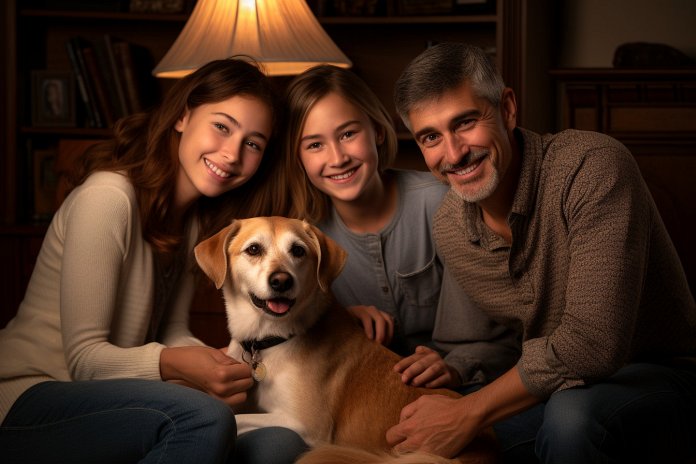
Cancer is a common medical condition in humans and pets, including dogs. Dogs can develop various types of cancers, ranging from treatable to terminal. Some dogs may live with cancer for a short time, while others may live for years with benign tumors. Many cancers in dogs do not cause noticeable symptoms, making diagnosis challenging. If signs of cancer are observed, it is important to seek veterinary care promptly for a diagnosis and prognosis.
Body Language
In addition to seeking veterinary care, observing your dog’s body language can provide clues about potential cancer. Signs such as whining, weakness, whimpering, and head bobbing may indicate cancer. Other signs to watch for include weight loss, changes in behavior, limping or signs of pain, and the presence of growths.
History of Cancer in Dogs
While it may seem that more dogs are getting cancer, it is likely due to increased rates of diagnosis rather than an actual increase in cancer rates. In the past, dogs were not considered part of the family like they are today. Money was not spent on veterinary care, and dogs with illnesses were often replaced. Nowadays, dogs are seen as family members, leading to increased medical care. Additionally, advancements in veterinary medicine have expanded treatment options for dogs, including chemotherapy, surgery, and radiation therapy.
Science Behind Dogs Living with Cancer
Not all cancers are the same, with benign cancers being less dangerous than malignant cancers. Dogs can live with benign tumors for years without treatment. Malignant tumors tend to spread throughout the body, while benign tumors grow slowly and are only dangerous if they obstruct or exert pressure on other organs. Factors such as age and breed can influence a dog’s likelihood of developing cancer. High-risk dogs should receive regular veterinary check-ups.
Dealing with a Cancer Diagnosis in Your Dog
A cancer diagnosis is frightening, but it is not necessarily a death sentence. It is crucial to listen to the veterinarian and fully understand the diagnosis. Treatment options, such as surgery, radiation therapy, and chemotherapy, can be effective in dogs. In fact, therapies like chemo and radiation often have higher success rates in animals than in humans. With proper care at home, dogs can recover quickly and become cancer-free. However, not all cases are treatable, and euthanasia may be recommended if the dog is suffering with no hope of improvement.
Caring for a Dog with Cancer
If your dog has an untreatable cancer, it may be necessary to consider euthanasia to prevent further suffering. Dogs with cancer may require extra support at home, such as limiting stairs or providing constant supervision. Dogs that have difficulty walking or standing may need assistance with eating, going potty, and moving around the house. It is important to be patient and understanding with your dog, as they cannot control vomiting or accidents.
Ultimately, the best interests of your dog should guide decision-making regarding their cancer treatment. Making difficult decisions may be necessary, but prioritizing your dog’s well-being is crucial.
In the face of a cancer diagnosis, remember to prioritize your dog’s best interests.

Tips & Things to Know
1️⃣ Be aware of the signs of cancer in dogs: Some common signs include weight loss, lethargy, loss of appetite, limping, difficulty breathing, and consistent digestive problems. If you notice any of these symptoms, it is important to bring your dog to a veterinarian for a diagnosis and prognosis.
2️⃣ Understand that not all cancers are the same: Benign cancers are less dangerous than malignant cancers, and many dogs can live with benign cancers for years. Age and breed can also play a role in the probability of developing cancer, so it is important to be aware of your dog’s risk factors.
3️⃣ Take the time to fully understand your dog’s cancer diagnosis: Cancer diagnoses can be scary, but they are not always a death sentence. Consult with a veterinary oncologist to discuss treatment options, which may include surgery, radiation therapy, and chemotherapy. With proper care and treatment, many dogs can recover and become cancer-free. However, in cases where the cancer is untreatable and the dog is suffering, euthanasia may be recommended to prevent further pain and distress.
Frequently Asked Questions, Answered ✅
1. What are some signs that a dog may have cancer?
– Weight loss, lethargy, weakness, loss of appetite, limping, difficulty breathing, and consistent digestive problems.
2. If I notice these signs, what should I do?
– Bring your pet to see a veterinarian right away for a diagnosis and prognosis.
3. Are all cancers in dogs treatable?
– No, some cancers are treatable while others may be untreatable.
4. Can dogs live with cancer?
– Yes, dogs can live with cancer, especially if it is a benign tumor or a treatable form of cancer.
5. What are the treatment options for dogs with cancer?
– Common treatment options include surgery, radiation therapy, and chemotherapy, which can be successful in many cases.